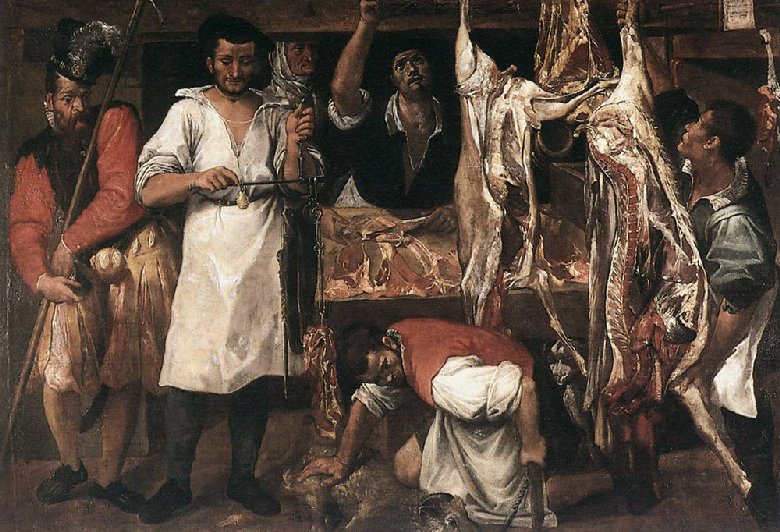
Title: Butcher’s Shop
Artist: Annibale Carracci
Date Painted: c. 1583
Medium: Oil on Canvas
Dimensions: 185cm x 266cm
Period: Baroque
Location: Christ Church Picture Gallery, Oxford
Summary of Butcher’s Shop
Annibale Carracci‘s The Butcher’s Shop is a celebrated work, often cited as a pioneering example of realism in art. Created in the late 16th century, this painting represents a significant departure from the idealized and religious subjects that dominated the art of the period. Instead, Carracci turns his gaze to the everyday life of ordinary people, capturing a scene from a butcher’s shop with striking detail and naturalism.
The Butcher’s Shop is remarkable for several reasons. First, it demonstrates Carracci’s mastery of composition and his ability to render the textures and forms of meat and human figures with equal skill. The painting features butchers at work, handling the meat with a sense of casual expertise, surrounded by the tools of their trade. The depiction of the carcasses, with their detailed rendering of flesh and bone, showcases Carracci’s keen observation of the physical world.
Carracci also uses light effectively to highlight the textures and create a sense of depth and volume in the painting. The figures are grounded in their environment, fully occupying the space with a sense of weight and presence. This emphasis on the physicality of the scene and the human figures within it is a hallmark of Carracci’s approach to painting.
The Butcher’s Shop is often interpreted as a statement on the dignity of labor and the beauty found in everyday life. By elevating a mundane scene to the level of high art, Carracci challenges contemporary notions of what subjects are worthy of artistic representation. This work predates by decades the genre scenes that would become popular in 17th-century Dutch painting, making it a forward-thinking piece in the context of its time.
Overall, The Butcher’s Shop is not only a masterful display of Annibale Carracci’s technical skill but also a significant moment in the history of art. It reflects a shift towards realism and an interest in the lives of ordinary people, themes that would become increasingly important in the development of Western art.